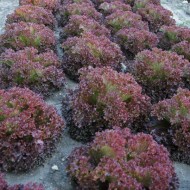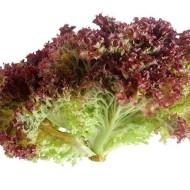What is lettuce and how to grow it in a summer cottage
Content
Description and dissemination of culture
Botanists classify lettuce as one of the flowering plant species in the Asteraceae family. Of the one and a half hundred varieties of the family, only the described species is cultivated (it is also called sowing lettuce), all others remain ordinary weeds. The plant is most common in the temperate latitudes of Europe and Asia.
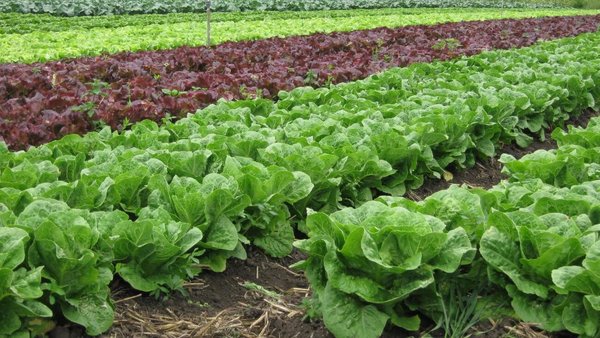
Here is a brief description of the view:
- Refers to early maturing annual crops.
- Loves moisture, resistant to cold.
- Core subsurface root system.
- The foliage is sessile, the shape and color of different varieties is different.
- Basket-type inflorescences, yellow.
- Single-seeded, non-opening fruits.
There are head and leaf types of lettuce, all parts of the plant are edible. The head type is preferable - its leaves are more flexible, tasty, and keep freshness longer. The leafy type retains its nutritional properties until the lettuce forms stems, then dries quickly, becoming unpalatable.
Video "Planting lettuce in the open ground"
In this video, you will learn how to properly carry out spring planting of lettuce outdoors.
Composition and calorie content
Grown salad greens are used in salads or as an addition to a side dish. 100 grams of lettuce contains:
- proteins: 1.36 g;
- fat: 0.15 g;
- carbohydrates: 1.49 g
The total calorie content is 15 kcal. The small number of calories allows the product to be classified as a dietary one.
Benefits, harm and contraindications for use
The culture is credited with healing properties. Infusion of fresh leaves is recommended as:
- sedative;
- hypnotic;
- antispasmodic.
Homeopaths use the juice squeezed from the plant in the preparation of a medicinal drug for diseases of the cardiovascular system. Even inedible varieties contain sedatives used in traditional medicine.
Scientists have identified in the plant a complete set of B vitamins, vitamins A, C, K and PP. Folic acid was found in the leaves, which is useful for expectant mothers. There is a wide range of minerals - potassium, calcium, zinc, iron and copper.
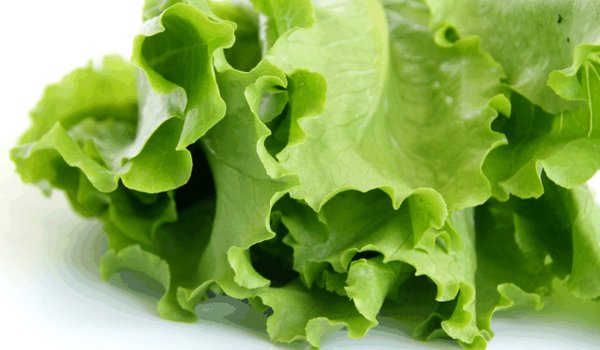
Let's list the main beneficial properties of lettuce:
- Stabilizes the digestive tract.
- Increases appetite, but not weight gain.
- Stabilizes the condition of a patient with diabetes mellitus.
- Strengthens hair.
- Contraindicated in gastritis with high acidity.
- With ulcers of the stomach and duodenum.
- With chronic colitis, pyelonephritis.
- With kidney and gallstone diseases (especially in the acute stage).
When eating a plant for food, one should not forget about the possible negative effects.The succulent leaves contain a lot of oxalic acid, which can harm people suffering from chronic ailments in large doses. It is not recommended to eat lettuce leaves for the listed ailments.
Types and varieties of lettuce
All varieties differ in appearance and taste from each other. For maximum benefit, it is advisable to plant several species in the garden.
Oak salad
The leaves of the culture are shaped like oak foliage, hence the name. The color of the leaves is green, but a reddish tint is visible along the contour. The taste is pleasant, reminiscent of a nut, therefore it is not recommended to season the dish with hot seasoning.
The varieties are widespread:
- Altero;
- Asterix;
- Maseratti;
- Dubagold;
- Dubrava
- Dubared;
- Robin;
- Torrero.

Lollo Rossa
Decorative look. Foliage in the shape of a fan with a wavy border. The colors are green and red. The variety has a high content of calcium and beta-carotene.
Popular varieties of the species:
- Lollo san;
- Lollo fan;
- Constance;
- Majestic;
- Nation;
- Barbados;
- Pentared;
- Eurydice.
- Decorative view of Lollo Ross
- Lollo Rosso foliage in the shape of a fan with a wavy border
- The variety is high in calcium and beta-carotene
Batavia, or cabbage-leaf
The most common type. There are leaf and head types. A characteristic feature is a massive spreading rosette formed by thick leaves with a wavy outline. The colors of the leaves are green, yellow and dark red.
Popular varieties:
- Grand Rapid Rits;
- Grand Rapid Pearl Jam;
- Risotto;
- Greenie;
- Starfighter;
- Funtime;
- Afitsion;
- Lancelot;
- Bohemia;
- Orpheus;
- Baston;
- Jumble;
- Triathlon.
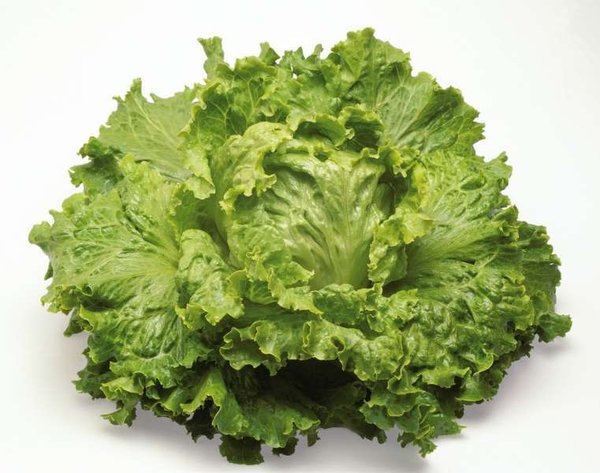
Oil
It is considered one of the most useful because of the high concentration of vitamin E. It got its name for its appearance - the leaves seem to be covered with vegetable oil. Not stored for a long time.
Existing varieties:
- 4 seasons;
- Alanis;
- Attraction;
- Berlin yellow;
- Kado;
- Cassini;
- Mayan King;
- Moscow region;
- Yakhont.
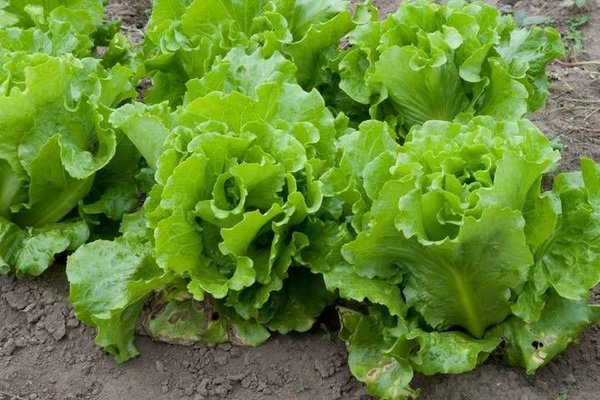
Crisp
This variety is sweeter than others due to the increased concentration of sugar. It crunches on the teeth, but some varieties (for example, Iceberg) do not have a special taste, so they are either served along with other varieties or flavored with sauces and dressings.
The crispy look includes varieties:
- Ensemble;
- Assol;
- Boston;
- Ice Queen;
- Hoplan;
- Snezhana;
- Robinson;
- Umbrinas.

Half-cabbage
Not the most common head type. Heads of cabbage are loose, many pores. Especially does not crunch. Contains many beneficial vitamins and minerals.
Famous varieties:
- Admiral;
- Sketch;
- Gascony;
- Geyser;
- Stavr;
- Eurydice;
- Chameleon;
- Teremok.
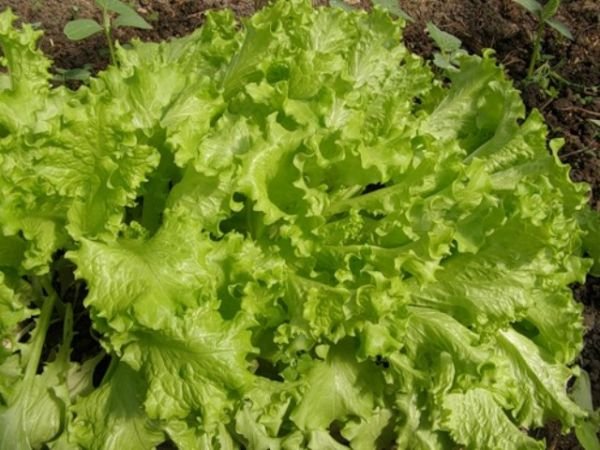
Romaine lettuce
Translated as "Roman". A type of half-open head of cabbage formed by light green leaves that curl slightly inward. This type is most often used in the recipe of the famous Caesar salad dish.
Popular varieties:
- Bachata;
- Victorinus;
- Quintus;
- Korban;
- Ninfa;
- Raphael;
- Roger;
- Turinus.
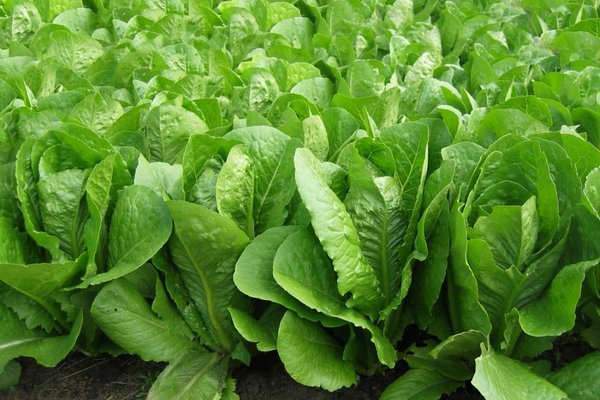
Basic rules for growing lettuce
The culture is unpretentious, therefore, even novice gardeners are able to grow it. There are several rules of agricultural technology, the adherence to which will allow you to get a soft and juicy crop without bitterness with a long shelf life.
- You will need a fertile neutral soil, enriched with nitrogen, which will increase the yield by 30%.
- It is advisable to apply top dressing to the soil in the fall, since during the spring the plant will not be able to fully assimilate it.
Any soils are suitable for growing, except for those whose acidity is increased. You can also use any fertilizer that does not increase acidity.
Landing rules
When planting, the culture is provided with enough space for growth. Saplings of leafy varieties are planted at a distance of 15 cm from each other, head plants - 25 cm. Excessive plant density contributes to the appearance of insects, pests and ailments.
It is advisable to plant in May so that the earth has time to warm up. Potatoes, tomatoes or cabbage are considered the best predecessors for the crop, and the latter should also be grown nearby so that it lures insects away.
Furrows are made in the ground with a depth of 1.5 cm in increments of 30 cm. The ground is watered, then the seeds are placed in increments of 15 or 25 cm and sprinkled. With the appearance of the first shoots, thinning begins.
Lettuce Care
The growing season depends on the selected crop variety. For example, leafy varieties become edible one month after the first sprouts appear, and cabbage varieties become edible in 40–65 days.
Care involves only periodic watering and timely thinning in order to avoid thickening. The rules are as follows:
- Excess shoots are removed when the seedlings form 3-4 full leaves. This will happen in about a month and a half. If the deadlines are missed, the root system grows strongly, stimulating the appearance of diseases.
- After 10-12 days, the procedure is repeated. The appearance of each new stem indicates that the plant is ready to bloom, and this should be avoided.
Lettuce is not treated with pesticides. The culture does not need special feeding, the main thing is that the soil is fertile enough. Compost or manure is enough to make the foliage lush and juicier.
Excessive soil salinity should be avoided, otherwise burns will appear on the foliage. For this purpose, mulching is carried out in a timely manner. The culture is hygrophilous, since the root system is located close to the surface. Watering 2-3 times a week in the evenings is considered optimal.
With a lack of light, the plant stretches out, the heads of cabbage become small and loose. In greenhouse conditions, they provide illumination for 10 hours. Head varieties are not afraid of cold weather down to –10 ° С, but crops with oily foliage die during frosts.
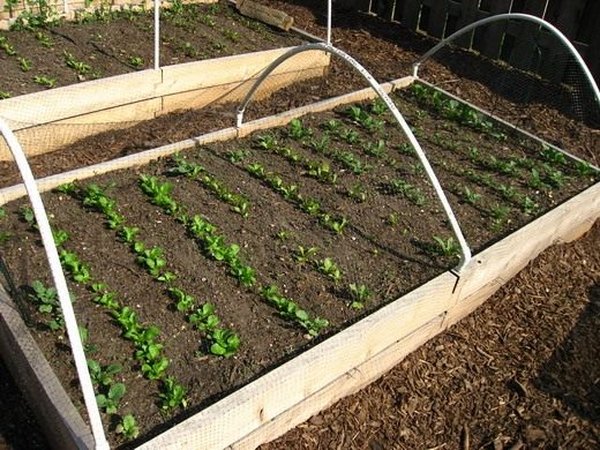
Pests and diseases and methods of dealing with them
Although crops need to be watered abundantly, excess moisture is harmful. Dampness attracts snails and insects and causes gray rot. Consider common crop pests:
- Leaf aphid. For prophylaxis, covering materials are used: spunbond and lutrasil.
- Slugs. To combat them, old planks or cut roofing material are laid out between the beds. The slugs accumulate underneath and are then easily collected. Also, the area around the perimeter can be sprinkled with quicklime.
- Wireworms. For prophylaxis, carrots, potatoes or beets are dropped in the prepared area at a depth of 5 cm as bait. After a few days, the bait is taken out, and with it the insects.
Culture is threatened by such ailments:
- blackleg;
- white and gray rot;
- downy mildew.
To avoid diseases, planting lettuce alternate with other vegetables. But the main thing is to follow the rules of agricultural technology given above.
Harvesting and storage
When harvesting, pay attention to the appearance:
- Leafy greens should be free from defects and spots, rich in color.
- The leaves of the heads of cabbage adhere tightly to each other, forming a tight bundle.
It is better to eat green salad fresh, but if necessary, it can be stored for a long time in the refrigerator in plastic containers (not in bags).
Application features
There are many ways to use ripe greenery, often it is even used simply as an ornamental culture in the garden. Let's take a look at some of the ways to use it.
In cooking
While fresh lettuce is pleasant on its own, the flavor can be improved by sprinkling the leaves with lemon juice or olive oil. Also, juice is often squeezed from greens (foliage of a dark green shade is suitable). Carrot juice is added to the drink. It is advisable to consume the juice freshly prepared.
In folk medicine
A decoction of lettuce seeds possesses medicinal properties. For cooking you need:
- pour a glass of boiling water over 1 teaspoon of seeds;
- leave for 2 hours, then strain.
The broth is beneficial for young mothers, as it increases milk production, and at the same time soothes the nervous system.
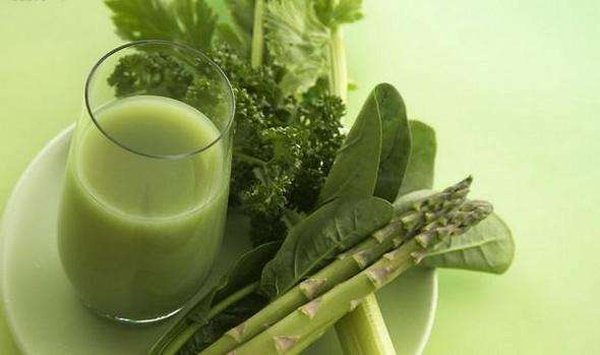
Here are a few more recipes.
From cough:
- Grind 20 g of greens, pour a glass of boiling water;
- insist 2 hours, then filter.
Take 50 ml 3-4 times a day.
For insomnia:
- 20 g of greens are crushed, pour a glass of boiling water;
- insist 30 minutes, then filter.
100 ml of the broth should be drunk before bedtime.
In cosmetology
It is recommended to wipe the face with the juice squeezed out of the plant. The tool helps to get rid of rashes and acne, as well as in inflammatory processes.
The crispy, tasty lettuce leaves are used to decorate dishes in various cuisines. The plant is rich in useful components that help us cope with diseases. Planting crops form a lush garden flower garden, which anyone can take care of.


